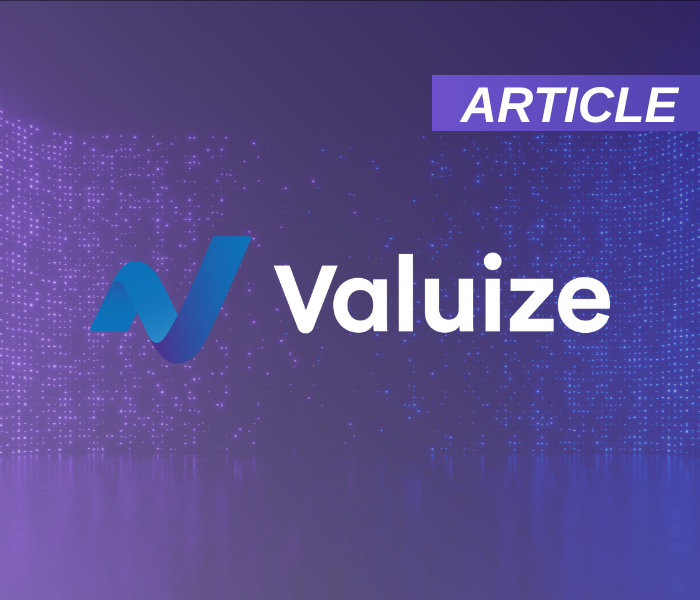Customer Success Is Built Around Value Management And Verification
A well-designed Customer Success (CS) program can yield a 91% return on investment over a three-year period (Forrester, 2020). In order to reap these benefits and maximize retention and expansion, B2B software businesses need to prescribe and deliver customer’s desired outcomes from the start of their journey as a prospect and throughout their time as a customer. But, creating and delivering value is just one piece of the puzzle. A thorough and well-rounded CS program needs to have an equally robust value management and verification process.
When you identify and define the customers’ desired outcomes, or Value-Based Outcome (VBOs), you will also go through the process of identifying the key milestones that your customer needs to hit in order to be successful. As an organization, you need to verify if these milestones are being met to determine if customers are indeed deriving value from your product. Value verification should be done throughout the customer’s lifecycle and not just at the renewal stage. Continuous value management and advocacy shows a true business-customer partnership. This process is essential to spotting problems in accounts before they churn and ensuring that these customers are on a continued path to success.
Here, we outline the 4 essential steps to a preeminent outcome verification process that will enable your organization to drive meaningful and measurable customer outcomes.
Step 1: Value Planning & Alignment
The main priority in Customer Success is ensuring customers successfully deploy and adopt your solutions to achieve a business outcome and to maximize their return on investment.
A key and critical part of delivering value is defining success metrics that matter most to your customers. Customer Success Planning and Outcome Maps are the first steps in value management and verification; they guarantee that you are aligned with your customers on critical value metrics. Therefore, it’s crucial that you have a robust customer success plan in place that includes well-defined business objectives, clear outcomes and measurable success metrics.
Step 2: Value Capture & Verification
As your customers achieve and realize value from your solutions, it’s essential that you not only capture this value but also verify the outcomes with your customers to ensure they are aligned and agree with the results. There are a couple key techniques to both capturing and verifying the value your solutions provide.
i. Usage Data
Monitoring usage data and mapping this to your value-based outcomes and their associated milestones is an important first step in value verification. It’s essential to align and map key features of your products and solutions to specific use cases and business value so that you can monitor for value realization as you monitor your customers’ usage patterns. While usage does not always equal value, evaluating which aspects of your product customers are using, how often they’re using them, and how long they’re using them for can help you spot potential value or identify at-risk customers who may need additional support to mitigate churn.
This data will also help you determine if the VBOs you prescribed are accurate or if there are any bottlenecks that are resulting in a loss of value realization. To make the most of these insights, make sure they are readily available to your team by integrating this usage data directly into your CS technology platform.
ii. Surveys
Surveys are a primary feedback source that can be implemented at each stage of the customer journey, from onboarding to adoption. Conducting surveys at every stage and at regular intervals will allow you to continuously verify outcomes and iterate your approach as needed to ensure a streamlined value delivery process. We recommend sending out short surveys, with no more than 10 questions, on a monthly basis to check in on your customers’ progress.
iii. Updated Success Plans
Continuously updating Customer Success Plans gives your team the opportunity to validate success metrics and outcomes with your customers. Not only does this continually drive alignment, but it allows your team to capture key and quantifiable VBO success metrics. These metrics can be used over time to validate the initial ROI model defined during the sales cycle.
iv. Customer Quotes
Nothing says it better than the customers themselves. Getting your customer to quote the benefits and impact your solution is having on their business is gold. These quotes can be replayed back during a QBR, relayed to key executives and sponsors, and can form the basis of internal or external references and case studies.
Step 3: Value Messaging
Once you’ve verified your outcomes and identified successes, you need to communicate these findings widely to ensure that the entire organization is on the same page. Hold a quarterly or monthly meeting to review the results of your outcome verification together and ensure that representative managers, directors, VPs and C-Suite leaders from each customer-facing team are all present and working with the same information. Value management and verification might only be 1-5 people’s primary concern, but if you want everyone in the organization to understand it and contribute to it, then you need to make value verification a collaborative and interactive conversation.
i. Newsletters
Monthly newsletters can be an effective way to communicate the value and outcomes realized through your solution. These newsletters can create a constant drumbeat of value messaging that reach the day-to-day project teams as well as engage key stakeholders and executives.
ii. Quarterly Business Reviews
You should go into your Quarterly Business Review with a customer with value already captured and verified. As a beneficial forum for one-on-one conversations, QBRs allow you to reinforce the value that’s already been delivered, verify that the customer is aligned and outline the next set of values that you will go after together.
Step 4: Action your Findings
Once you’ve established a clear outcome verification process, it’s time to take action on your findings.
i. Driving Expansion Through Outcome Verification
Success breeds success; nothing is as effective in driving expansion than showing off your success to other business units. Use your value messaging to demonstrate your team’s impact and create champions who will advocate on your behalf to other teams and stakeholders, expanding your influence and success across the entire organization.
ii. Benchmarking
Collect, anonymize, and collate your customer data across the organization to use as a benchmarking tool to show your customers where they stand relative to their peers. This benchmarking exercise will demonstrate where your customers are on the maturity curve and put their performance into perspective with a clear baseline. Your organization can then use this data to point out opportunities, such as product tweaks or organizational changes, and incentivize customers to make positive changes that keep them renewing and expanding their business with your company.
Verify Value At Every Step Of The Customer Journey
Value management and verification is an essential component of a proactive Customer Success organization. Just like value delivery, your value verification process needs to start as soon as possible in your journey with the customer. Outcome verification is crucial to measuring your and your customer’s success and ensuring that the both of you are on the path to maximizing value.
The success of your Customer Success organization depends on automating processes, including outcome delivery and verification, to enable sustainable and scalable growth. Read our article about how to scale customer retention through Customer Success automation.






